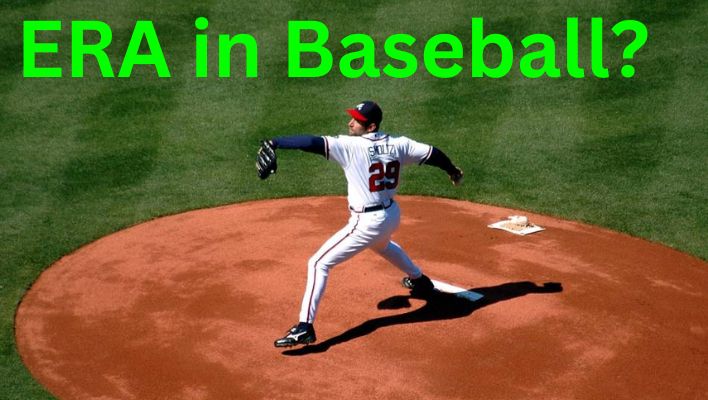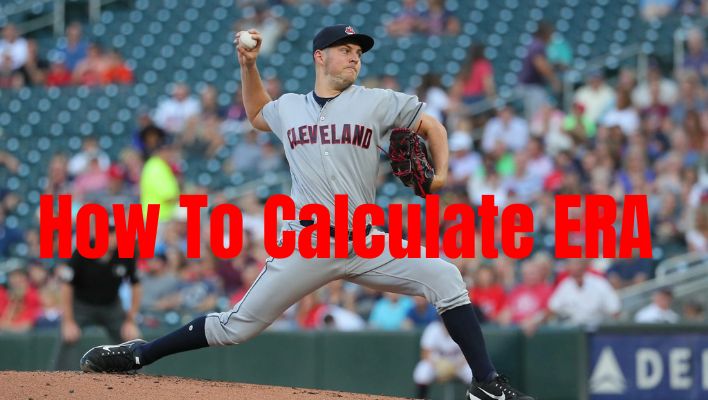If you are a baseball enthusiast or a passionate baseball fan, you must have an idea about ERA, aka Earned Run Average. It is, generally, a baseball acronym or abbreviation used for one of the most important stats of a baseball game.
However, many people still need clarification about the exact meaning of ERA and how it is calculated. Another confusing aspect is what is a good ERA and how it affects the pitcher’s performance.
This article will provide an in-depth insight into the ERA concept, its calculation formula, the impact of the game, and how crucial it is to maintain a good ERA. Read on!

What Is ERA In Baseball?
Content Summery
ERA, an abbreviation of Earned Run Average, is one of the most critical baseball stats that play a crucial role in the game. Please note that a pitcher’s ERA determines the number of earned runs that the pitcher allows per nine innings pitched.
In a nutshell, we can say that it is a metric to evaluate a baseball pitcher’s performance or credibility.
Also, it is crucial to understand why ERA was introduced in baseball. The purpose of introducing ERA was to emphasize the evaluation criterion of pitchers, as they are the most critical asset to a team’s success. The ERA evaluation system was designed to cater to the needs of evaluation. Let’s further dig into its origin.
Origination of ERA
As mentioned above, the idea of ERA came into baseball history when coaches felt the need to assess pitchers in baseball more carefully. Precisely, the Earned Runs Average method was created in the mid-to-late 1800s.
Henry Chadwick, a baseball statistician and writer invented this unique way of assessing pitchers. He used to believe that wins and losses of a game were not enough to indicate the pitchers’ expertise.
Therefore, he devised this system of tracking their performance through statistical data, which later became the mandatory part of pitchers’ evaluation. It was because the track record of pitchers’ previous innings hints at his expertise to prevent the opposing team from getting the earned runs.
Consequently, it became a famous pitcher’s expertise evaluation trend at the beginning of the 20th century and later became the central part of the pitcher’s portfolio. Precisely, it gained the rank of the official baseball evaluation criterion in 1912.

How To Calculate ERA?
It is not as tricky as it was hyped to calculate the ERA of a pitcher. Especially after getting hands-on experience in estimating, it becomes the most straightforward calculation. Nevertheless, the experts have devised a formula to calculate the ERA fairly. The formula is,
ERA = (Earned Runs / Innings) x 9
Simply divide the total number of earned runs allowed by a pitcher by the total number of his pitched innings. Then, multiply it by nine. To elaborate further, we can presume that a player who has allowed 20 total earned runs in 50 innings. So, the formula would apply in the following sequence,
ERA = (20 / 50) x 9
ERA = 0.4 x 9
ERA = 3.6
So, the ERA of the pitcher would be 3.60. Please note that the ERA is always denoted to two decimal places. Therefore, we will add 0 to the calculated figure, which was 3.6. So the final result would be 3.60.
What Is Considered A Good ERA?
A good ERA may differ from league to league due to the incorporation of several aspects of the league. Also, the criterion of good ERA has evolved over time. Earlier, 2.00 or below 2.00 was a good ERA, mainly in the 1900s.
However, in the present era, 4.00 or lower is considered to be a good ERA. thus, we can say that the criterion of good ERA also varies from generation to generation as it has prominently changed over time.
Below is the rating scale of good Earned Runs Average, ERA that is being used in the present times.
| Rating | Earned Runs Average (ERA) |
| Exceptional | 2.00 – under 2.00 |
| Excellent | 2.00 – 3.00 |
| Above Average / Good | 3.00 – 4.00 |
| Average | 4.00 – 5.00 |
| Below Average | 5.00 – 6.00 |
| Poor | 6.00 and above |
ERA Only Calculates Earned Runs
You must have noticed that ERA is not the stats of an average run that a team scores against its opponent. Instead, it is the average of the earned runs that a team scored against the pitcher of its opponent team. Still trying to understand?
To understand it well, we first need to understand the difference between earned and unearned runs.

Earned Runs Vs. Unearned Runs
Earned runs are those runs that a team scored due to negligence, inefficiency, or mistake of the pitchers. Therefore, pitchers are accountable for the number of earned runs the opponent team makes. On the other hand, unearned runs are those runs that are scored due to the negligence or mistake of fielders and any other defensive error.
Moreover, a good pitcher is only accountable for the earned runs. Thus, the ERA of the pitcher only calculates the earned runs subtracting unearned runs.
Earned runs are runs for which a pitcher can be held fully responsible. To be counted toward a pitcher’s ERA, a run cannot result from any defensive errors or passed balls. Runs not counted in a pitcher’s ERA are called unearned runs.
Can A Pitcher have A Zero ERA?
Before answering this question, let’s discuss the average ratio of earned and unearned runs in a game. You may be surprised to know this ratio as it is 9: 1 earned and unearned runs. It means that 90% of the runs in baseball are earned runs, scored due to the pitchers’ fault.
As a result, it makes it more challenging for pitchers to have zero ERA, earned runs average. But there is still a possibility to gain zero ERA.
But a zero ERA does not refer to the pitcher’s skill; instead, it may refer to the undefined or infinite ERAs. For example, zero ERAs are typically reported only at the beginning of a league before the final statistics are calculated.
Pros and Cons of Earned Runs Average, ERA
Pros
- Despite several other ways being introduced to evaluate pitchers’ credibility, ERA is still considered the most favored and reliable statistical method.
- Fans, coaches, players, and everyone rely on this evaluation criterion.
- The measuring way has so deeply ingrained into baseball that no game could even think of without mentioning the ERA of the pitchers.
- The method is transparent, easy, and convenient.
- It negates the element of biases.
- It is easy to calculate. You only need to apply the formula which we have already mentioned above.
- In addition, the method of calculating the average of earned runs against pitchers remains the same, which means no cheating. Anyone can track the record of a pitcher to calculate its ERA.
- The method has drawn a more prominent line between earned runs and unearned runs, giving accountability to the right players for the runs.
- It has filtered out the external errors, which helped the team to become more concerned about their flaws and work on them to perform great.
Cons
Some baseball enthusiasts believe this evaluation system has certain loopholes that make it less effective than other evaluation methods, such as Runs allowed per nine innings pitched, aka RA9, and Fielding Independent Pitching, aka FIP.
Their claim is mainly based on the following cons of the ERA method.
- The ERA method needs to be revised to calculate the runs of two leagues in Major League Baseball.
- Some external factors can affect the ERA scoring of a pitcher, such as specific stadiums calculating runs in a more conducive way.
- ERA calculates the defensive mistakes instead of focusing on the defensive plays.
- There may arise a conflict in the declaration of earned runs or unearned runs.
Final Words
To conclude, ERA is one of the most traditional and standard methods to evaluate the pitcher’s credibility or performance in any inning. Precisely, it calculates the average runs of earned runs that a team scores against a pitcher per nine innings. It is also vital to note that baseball traditionally extends to nine innings.
Please note that according to some baseball experts, this evaluation criterion has some drawbacks. Still, it is considered the most reliable and common way to assess picture expertise. We have already talked about these aspects in detail in this article.

FAQs
Q. Which is better in baseball, a high ERA or a lower ERA?
A low ERA means the pitcher does not allow more runs to the opponent team. Therefore, the team only succeeds in making fewer runs against the pitcher. This phenomenon hints at the expertise of the pitcher. Therefore, a pitcher with a low ERA is better than a high ERA.
Q. Can you name the pitcher who has the lowest ERA in Baseball history?
There are two prominent names when it comes to low ERA in Baseball history. First is Tim Keefe, who had a 0.86 Earned Runs Average in the National League Troy Trojans in 1880. The second name is Ed Walsh, who has a 1.81 ERA in 1900s leagues. He quit playing baseball in 1912 due to a physical injury.
